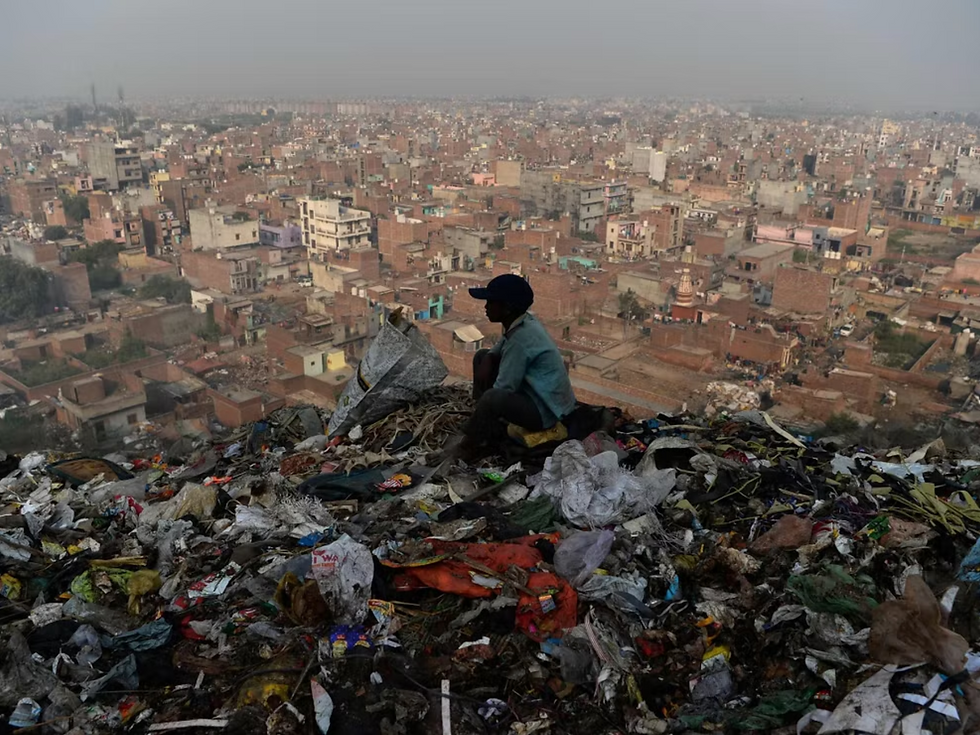Population growth is not good for people or the planet
- Nandita Bajaj

- May 12, 2023
- 3 min read
Updated: May 15, 2023
Stable Planet Alliance chair and humane educator, Nandita Bajaj, published this piece in the Inter Press Service News Agency on 10 May, 2023. You can read the full article here.
According to the United Nations, the world’s population is more than three times larger than it was in the mid-twentieth century. The global human population reached 8.0 billion in mid-November 2022 from an estimated 2.5 billion people in 1950, adding 1 billion people since 2010 and 2 billion since 1998. The world’s population is expected to increase by nearly 2 billion persons in the next 30 years, from the current 8 billion to 9.7 billion in 2050 and could peak at nearly 10.4 billion in the mid-2080s.

ST PAUL, Minnesota USA, May 10 2023 (IPS) - India’s population has just reached 1.4 billion people, surpassing China as the world’s most populous nation four years earlier than projected. Spurring this growth is a traditional patriarchal culture in which women’s identity is constrained by the social expectation they bear children.
Across the globe, pronatalist forces undermine women’s autonomy and self-determination. Pronatalism is an underlying driver of the global population growing to 8 billion and counting, with 80 million added each year.
The new UNFPA State of World Population Report is wrong to dismiss “population anxiety” as groundless and assert that “population sizes are neither good nor bad.” Population growth is not good for people or the planet, and anxiety is not an unwarranted response to how it affects us.
Population growth deepens social and economic inequality and has negative impacts on unemployment, housing costs, inflation, infrastructure, resource scarcity, pollution, and well-being. It even fuels resource conflicts and wars.
It’s also one of the key variables determining overall consumption and pollution levels, which are jeopardizing planetary life support systems on which we and Earth’s remaining biodiversity depend.
Population growth is a significant factor in climate change according to the Intergovernmental Panel on Climate Change. Over the past three decades, it has cancelled out most climate gains from renewables and efficiency.
Going forward, population growth will be concentrated in the developing world. Dismissing its environmental impacts betrays an assumption that low-income populations in the Global South will stay that way.
This is false as well as unjust. Across the globe, the middle class is the fastest-growing segment of the population, projected to grow another billion to reach 5 billion by 2030. This will bring better living standards for a billion of today’s poor. But we must recognize that it will also bring more peril to an already overburdened planet.
Beyond its impacts on GHG emissions and the climate, population growth also drives broader “overshoot,” meaning that human demands are exceeding Earth’s regenerative capacity.
Currently, we consume 75 percent more than the Earth can provide sustainably, resulting in unprecedented biodiversity loss and an extinction crisis, dwindling freshwater supplies, ocean acidification, expanding desertification, and resource scarcity.
Much of this damage comes from our global food systems, which are directly tied to population growth, and which have already transformed at least 40 percent of the planet’s ice-free land area. They are the primary threat to 86 percent of endangered species.
Much of agriculture’s negative impact is due to the Green Revolution, which is often invoked to inspire confidence that human ingenuity can solve the problems associated with population growth.
But the Green Revolution has posed wicked problems of its own, including deforestation, damaging soil health and the nutritional content of food, and agrochemical pollution. In the Global South, where these problems are especially acute, it has failed to improve health and well-being.
Similarly, faith in green technology, including the unfounded belief renewable energy will somehow decouple growth from environmental damage, ignores real-world negative impacts which disproportionately affect poor people and frontline communities.
Scaling up massive clean energy infrastructure without working to downsize demand wreaks environmental devastation. So does mining toxic rare earth metals, dirty and dangerous work which is done in slave-like conditions by people in the Global South.
The UNFPA report displays this kind of misplaced faith in technology and human ingenuity. Such faith is rooted in a bias toward endless economic growth, propagated by those who have most benefited from the current economic system and who are already wealthy. It ignores the ecological unraveling of continued human expansionism, and the massive toll it takes on human well-being.
Read further in the original article.

A young Indian ragpicker looks over the city after collecting usable material from a garbage dump at the Bhalswa landfill site in New Delhi
(AFP/Getty)
Nandita Bajaj is the executive director of Population Balance and co-host of The Overpopulation Podcast. She also teaches the first graduate course of its kind: Pronatalism, Overpopulation, and the Planet, through the Institute for Humane Education at Antioch University.








Comments